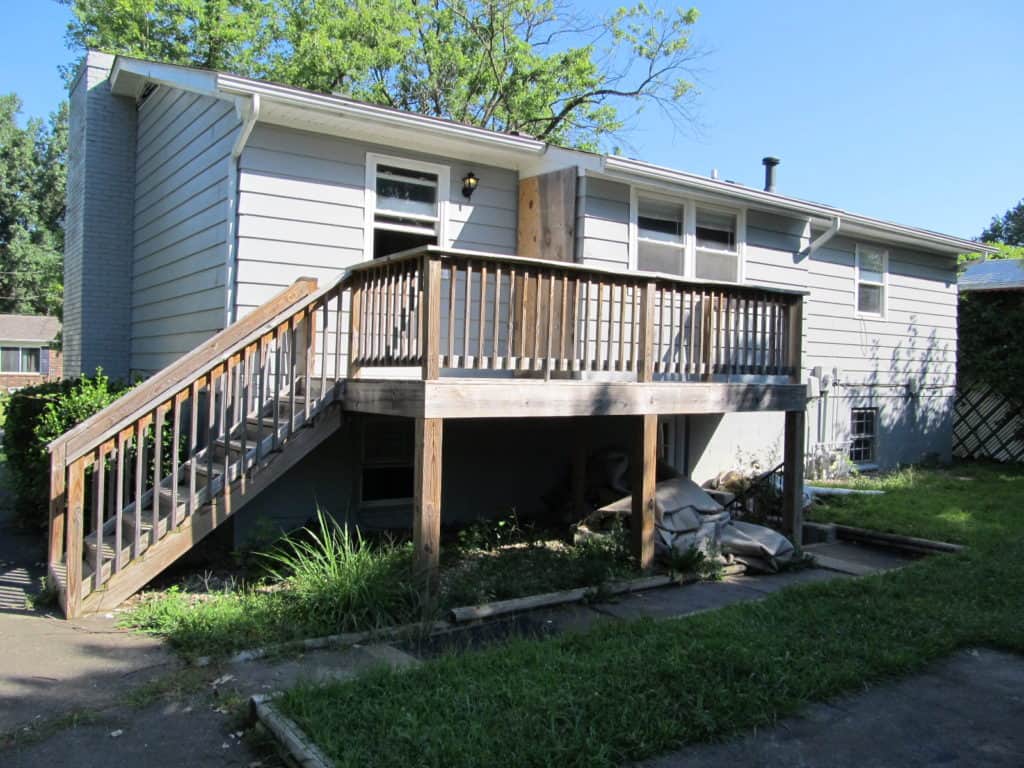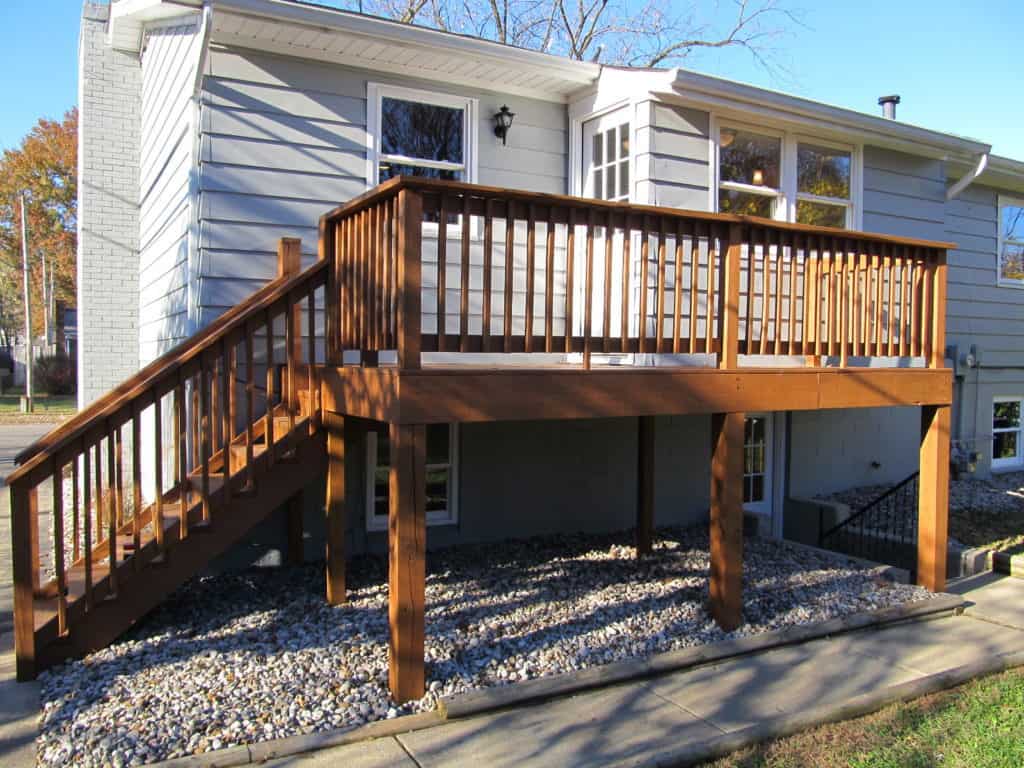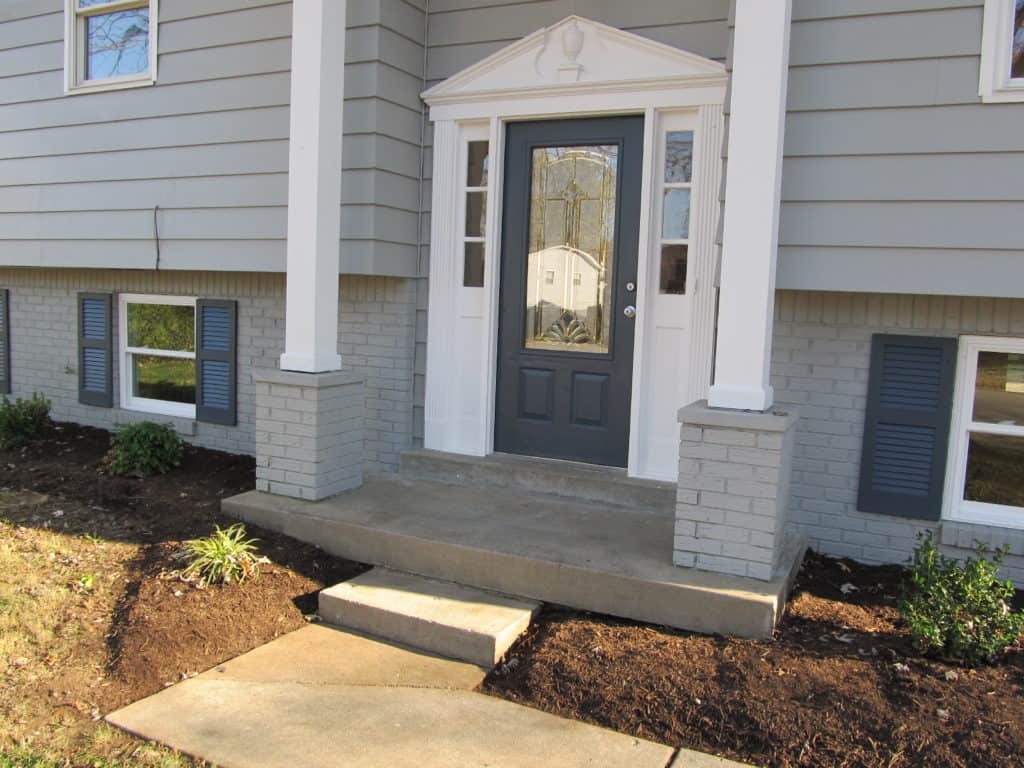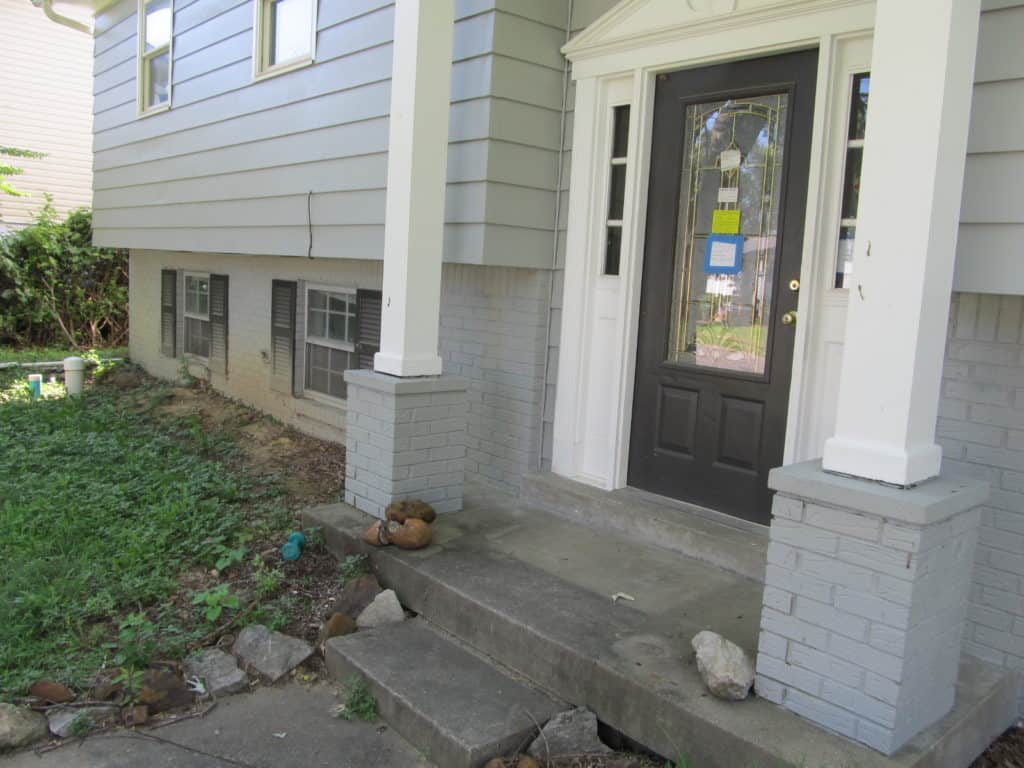When most people think about house flipping, they typically picture tv shows like “Flip or Flop” or “Flip This House“.
That depicts professional house flippers paying cash for a distressed property and then quickly rehabbing them to sell for a quick profit.
And while this is definitely a strategy that works, this is not the only way to flip a house or get into house flipping.
As the two-year flip strategy is a great way to get into house flipping if you don’t have a lot of capital, have a lower tolerance for risk, or don’t want to quit your full-time job.
What is the 2 Year Flip Strategy?
The two-year flip strategy goes by a lot of different names including the “live in house flip”, “the slow flip”, or the “the 2-year house flip” but they all describe the same basic house flipping strategy.
The 2-year flip strategy describes the process of buying a home to live in as your primary residence for two years using traditional forms of financing. And then slowly fixing the house up over time while you live there, so you can sell the house and not have to pay capital gains tax on the profits.

How Anyone Can Use the 2 Year Flip Strategy to Flip a House
While many would-be house flippers feel like they can’t participate in house flipping because of a lack of money, experience, or time.
The two-year flip strategy is a way that just about anyone can get into house flipping.
But there are some best practices and things to look out for if you plan on doing a live-in flip, which is why we created this simple three-step process on how to flip a house using the two-year flip strategy.
Step 1: Buying the House
When buying a home you plan to flip eventually, there are some things you need to keep in mind throughout the home buying process, to make sure you set yourself up for success.
Picking the Right House to Flip
There are several things you need to keep in mind when looking for a house you can flip using the two-year flip strategy and the first one involves the type of house you should be looking for.
While you might think you want to find a really run-down and dilapidated home to maximize your potential profit.
It’s actually better to focus on homes that mainly need light rehab and cosmetic fixes and updates.
The reason for this is two-fold, to begin with because you will be using traditional forms of financing such as a conventional or FHA loan when buying your house flip.
The home will need to meet minimum lender property condition standards, which means the home needs to be in at least average condition, with no major issues such as roof or foundation problems and all major mechanicals in the home such as plumbing, HVAC, and electrical need to be in working order.
The next reason why you need to focus on homes that mainly need cosmetic repairs and updates is that you want to avoid getting in over your head by buying a house that requires repairs and fixes beyond your abilities.
Because while it’s certainly ok to use subcontractors for some of the work and repairs to the home.
The best way to maximize profits when you go to sell the home is to put in as much sweat equity as possible and do the repairs yourself.
Finding the Right House to Flip
There are countless sources of properties when looking for houses to flip, such as the MLS, HUD homes, for sale by owners, auction properties, and foreclosures.
But when looking for a house to flip using the live-in flip strategy, it’s best to focus on homes where more traditional forms of financing are accepted.
As real estate auctions and foreclosure sales often require cash or hard money loans to be able to participate due to the condition of the home or the type of sale.
So when looking for a house to flip using the 2-year flip strategy, you want to mainly look at seller-owned homes that are for sale.
As these types of sellers typically have homes in good enough condition to finance and are ok with a 30 or 45 day closing process, which is how long a typical home loan takes.
Financing the House Flip
While we have already talked some about the best financing options for flipping houses, we created this helpful table below that really breaks down each type of financing and its pros and cons.
Best Financing Options for the 2 Year Flip Strategy
| Type of Financing | Minimum Credit Score | Minimum Down Payment | Closing Timeline | Minimum Property Condition |
| Conventional | 620 | 3% of Purchase Price | 30 Days | Fair to Average |
| FHA | 580 | 3.5% of Purchase Price | 45 Days | Average to Good |
| FHA 203K | 620 | 3.5% of Purchase Price | 45 Days | Fair to Average |
| VA | 650 | 0 | 60 Days | Average to Good |
| USDA | 640 | 0 | 30 to 45 Days | Average to Good |
Conventional Loan
One of the best types of loans to use for a slow flip is a conventional loan.
As this type of loan will generally allow the property to be in more distressed condition and will have fewer property condition requirements, especially if you’re putting 20 percent or more down.
Allowing you to buy more of a fixer-upper property, that could potentially have a higher profit margin when you go to sell the property two years later.
Conventional loans also usually have a shorter closing timeline, allowing you to get into the property faster and start that 2-year clock faster.
FHA Loan
The FHA loan is one of the most popular types of home loans today, especially for first-time homebuyers, as this loan allows for a lower minimum credit score compared to other types of home financing.
However, the trade-offs to this lower minimum credit score are there are usually many more hoops to jump through to get the loan, longer closing times, strict minimum property condition requirements, and a minimum downpayment of 3.5 percent of the purchase price.
But if you don’t have the best credit and want to try the live-in flip strategy, this might be your best option.
You will just need to focus on homes that are in pretty good condition structurally and mechanically.
Also, it’s worth mentioning that FHA loans require you to live in the home as your primary residence for at least one year before you are allowed to sell it.
However, since you’re using the live-in two-year flip strategy, this shouldn’t be an issue for you.
FHA 203K Loan
A loan that not too many people are familiar with is the FHA 203K loan, which is like an FHA loan but allows the borrower to finance a certain amount of updates and repairs to the property into the loan.
Making this type of loan a great option for those that want to flip a house but don’t have a lot of money to put into the rehab of the property.
However, the one caveat to this type of loan is because you are using the bank’s money to update and repair the home, the bank is going to require a licensed contractor to do the major work and repairs to the property.
Which will eliminate a lot of the sweat equity profit you could have received if you had done the work yourself.
VA Loan
The big advantage to the VA loan for the two-year flip strategy is that VA loans require no down payment, making this type of loan a great option if you don’t have a lot or any money to put down on the home.
However, because this type of loan is 100% financing and requires no down payment, the VA loan has some of the strictest property condition requirements.
Meaning if you use this type of loan, you will need to find a home that needs mainly cosmetic updates and repairs such as painting and installing new floors.
USDA Loan
The last type of loan that can be used for a slow flip is the USDA loan, which is another type of loan that most buyers have never heard of before.
The USDA loan which is a government-backed loan is a type of loan that encourages the purchase of homes in rural areas and it does this through attractive loan rates and a no downpayment requirement.
Which is great for flippers using the two-year flip strategy.
However, as was the case with VA loans, this no down payment requirement or 100% financing, means the property will need to be in pretty good condition to qualify for the loan.
It also means the property will need to be located in a rural area of the country which might make this type of loan irrelevant depending on where you live in the country.

Step 2: Rehabbing the House
The rehab of the house is one of the most important steps when flipping a house, as this is the primary way you will be adding value to the home.
Because while the home will appreciate naturally in a normal real estate market, by about 3 to 5 percent a year.
The bulk of the profit when you go to sell the house will be provided by the updates and repairs you make to the property.
So when rehabbing a house that you plan to flip, there are few things you need to remember to ensure that you add the maximum amount of value to the house.
Tips for Rehabbing a House for Maximum Profit Using the Live-In Flip Strategy
- Stick to neutral colors and popular design choices when rehabbing the house. Remember when you are choosing design finishes and colors, that these choices need to be made with the end buyer in mind and not your personal tastes.
- Don’t go overboard on high-end finishes and fixtures. While you want to make the home as nice as possible, if you choose finishes and fixtures too far beyond what’s common in the neighborhood, you often will not get a good return on investment.
- Focus on kitchen and bathrooms. As the old saying goes “kitchens and bathrooms sell houses”. So when deciding on what to repair and update, make sure you pay special attention to the kitchen and bathrooms in the house.
- Don’t forget about the exterior and landscaping. Oftentimes new house flippers will treat the landscaping and exterior of the property as an afterthought. But if you want to maximize your profits when you flip the house you need to pay attention to the exterior as well.
- Don’t wait till the last minute to do all the repairs and updates to the home. If you want to maximize your flipping profits when using the 2-year flip strategy, then you need to make sure that you have the house completely done and listed as soon as you have reached the two-year mark.
Step 3: Selling the House
The final step to the 2-year flip strategy is selling the house.
And this is also the step where you get to see if all your hard work and planning have paid off.
But in order to successfully complete this step, you need to do more than just stick a for-sale sign in the front yard.
As there are several things you need to do and consider to maximize the amount of profit you make when you sell your two-year flip.
Preparing the Home for Sale
When you sell any house, you need to de-clutter and remove as many personal items and photos as possible.
And when you sell your live-in flip, you are not immune to this rule.
Because just like any other seller, you have more than likely accumulated a lot of stuff while you’ve lived in the home.
And in order to maximize the value of the home, you want the home to feel as uncluttered as possible and keep the decor as neutral as possible so that potential buyers can easily imagine themselves living in the property.
Hire a Qualified Real Estate Professional
While you might be tempted to stick a for sale by owner sign in the front yard to avoid the hefty commission of a Realtor.
I would encourage you to list the home with a qualified and professional real estate agent, as this will ensure that your home receives maximum exposure in the market and is presented in the best possible light.
Which will help you to make more money, even when you take into account the typical 6 percent commission a Realtor will charge.
To illustrate this point, did you know that the average sales price nationwide in 2018 for a for sale by owner homes was $217,900, while the average sales price for a home sold by a real estate agent was $295,000 in the same year according to the National Association of Realtors.
Make Sure the Home Is Presented in the Best Possible Light and has Maximum Market Exposure
While any competent agent will ensure that your home is presented in the best possible light by taking attractive and professional photos of the home, helping with any needed staging, making sure the home is listed online everywhere buyers are looking, and ensuring the home is easy to show.
If you choose to not use the services of a professional real estate agent, you will need to ensure that all of these things get done.
And even if you do hire a real estate agent to sell your house, it never hurts to check up on them and see how good of a job they’re doing to sell your house.

How Long Do You Have to Live in a House Before You Can Flip It?
There is no minimum timeframe that you must live in a house before you can flip it.
However, if you used a loan to obtain the property the lender might have placed a resriction on how soon you can sell the house from purchase. Such as FHA loans that require you to live in the home as your primary residence for at least one year before you can sell the property.
In addition, there is also something called the 90-day flip rule, which does not prevent you from selling the house but can affect the buyer trying to buy your home.
The 90-day flip rule prevents a buyer from buying your home thats using an FHA loan within the first 90 days from when you purchased it.
As FHA loans have a lending restriction that states the seller of the property must have owned it at least 90 days before they will approve the loan.
How Can I Flip a House without Paying Capital Gains?
One of the main reason why the 2-year flipping strategy is so popular among house flippers is due to it’s tax advanatages.
Because if you live in a home for two years as your primary residence, when you sell the home, you do not have to pay capital gains tax on the profits, up to $250,000 if you’re single or up to $500,000 if you’re married.
Which means you can use the two-year flip strategy to buy a house, live in it for two-years while you fix it up, and then sell it without owing any capital gains tax on the profits.
And the only limit to this exemption is that you can only use it once every two years, which means you could repeat this 2-year flip strategy over and over again, allowing you to use you home as a money making machine.
Recent Posts
How much does a push lawn mower cost? This is a question that many people have when they're looking for a new lawn mower. The good news, however, is that push lawn mowers are one of the most...
Are you looking for a cheap lawn mower? If so, you've come to the right place! Because in this blog post, we've highlighted the 10 cheapest lawn mowers on the market today. Plus, we provide...


